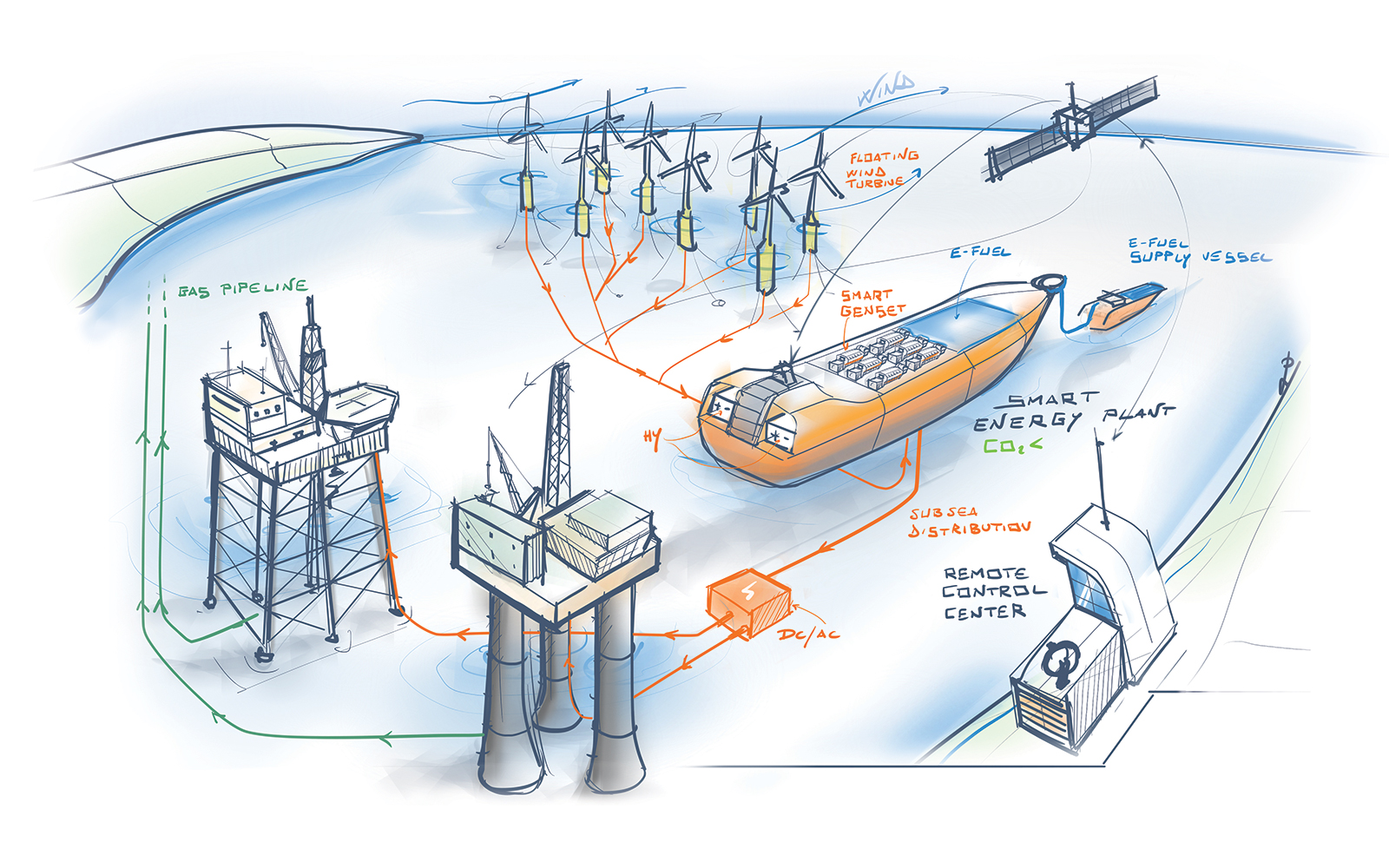Floating an idea for fossil-free platform power
Innovative thinking is needed on the path to decarbonising the offshore oil and gas sector, writes Wärtsilä’s Tim Burnett

Can the North Sea become a net-zero basin by 2050 while maintaining energy security?
It is a tricky balancing act for UK oil and gas, but last year’s landmark North Sea Transitional Deal (NSTD) between government and industry is helping tackle the challenge.
Through the deal, the sector has committed to cut emissions by 10% by 2025, 25% by 2027 and 50% by 2030, against a 2018 baseline. The net reduction should rise to 90% by 2040 and 100% by 2050, bringing the sector to net zero.
Getting to net zero
Some North Sea operators are already taking steps to future-proof operations and optimise asset performance by deploying the latest digital technologies, machine learning, artificial intelligence and remote support. In its latest update on NSTD progress, Offshore Energies UK (formerly OGUK) reports that carbon emissions from the UK Continental Shelf (UKCS) are down by 10% since 2018 – half of which is a direct result of action taken by oil and gas operators. However, it is evident that a 50% reduction in carbon emissions – and, ultimately, net zero – will require more dramatic change.
Tackling power is key
For production platforms, the main contributor to emissions, apart from flaring and venting, is the power generation process. According to the Oil & Gas Authority, power accounts for around two-thirds of oil and gas production emissions. The gas turbines or diesel generators that typically power offshore platforms are fuelled either by gas from the well or bunkered marine diesel oil. Not surprisingly, then, operators are considering electrifying their platforms.
Advancing platform electrification
Whether platforms can be electrified by shore connection or using offshore renewable sources is the subject of much debate. However, one certainty is that full electrification of individual North Sea installations will require expensive power cables to be laid. And for some installations, the prohibitive expense will make decommissioning a genuine consideration.
At Wärtsilä, we recognise that the pace of emissions reduction will accelerate as technology advances and our vision of the future evolves. For this reason, we believe that platform electrification can happen both cost-effectively and well ahead of net-zero targets.
Offshore floating energy hub
One promising solution is to deploy floating wind turbines that can generate enough baseload to satisfy the energy demands of nearby offshore assets. This power is routed to a repurposed floating production storage and offloading vessel or similar stable floating structure, then redistributed to the installations as needed (see Figure 1).
While wind power will generate the baseload, flexible four-stroke power generating sets (adapted to run on carbon-neutral or zero-carbon fuels) will provide the flexibility, resilience and reliability needed for stable energy generation. Supplemented by a hybrid-battery system for fast ramp up, this combination turns the vessel into a floating energy hub ready to meet the power demands of the surrounding installations.
Added value
The floating power hub will not only reliably meet the energy needs of nearby assets, but as it is fully mobile, it can also be redeployed to other areas or regions when those requirements change.
Other benefits include low maintenance and upkeep requirements, as a permanent human presence is not required. The intention is for the hubs to be unmanned, with all control and monitoring activities transferred to an onshore control room using digital enablers that already exist. Enablers such as Wärtsilä Expert Insight, for example, which uses machine learning to enable better maintenance decisions, recognising anomalous behaviour before problems arise so that appropriate corrective action can be taken.
Operated as a Normally Unattended Installation (NUI), there is no requirement for accommodation facilities or a helideck, although a safe refuge would still form part of the structure. By adopting NUI principles, maintenance will be carried out every six months, with the asset accessed by means of a walk-to-work facility.
Centralising power generation in a floating hub means that surrounding oil and gas installations no longer need to commit resources to maintain their own power systems. Maintenance personnel are freed up to focus on other areas, and the reduced need for maintenance interventions would likely improve safety and reduce associated costs.
Powering installations using electricity, from a cable to the shore or from a nearby windfarm, could lead to a reduction of 2–3Mt CO2 a year – equivalent to the annual carbon emissions from households in a city the size of Liverpool
Fuel bunkering is concentrated in one central location, reducing the risk of environmental escapes.
Plans for the future
Even more innovative developments are possible further into the future if we consider the production of green hydrogen to store the surplus energy that is produced from floating wind farms. However, it remains to be seen whether this would be an economical use of power at facilities dedicated to oil and gas applications.
The technologies needed to make this happen are already in service, although not yet applied in this way in the oil and gas industry. Viable, affordable green power for offshore platforms is within reach if we work together.
By Tim Burnett, General Manager, Market Innovation Oil & Gas, Wärtsilä
Image credit | WÄRTSILÄ






Follow us
Advertise
Free e-Newsletter